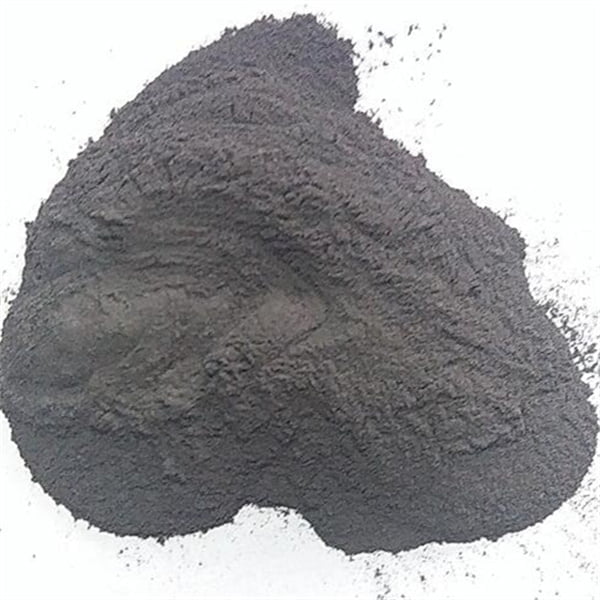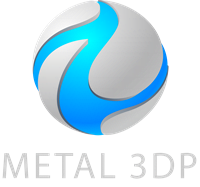Imagine a world where skyscrapers pierce the clouds with unparalleled strength, yet weigh a fraction of their steel counterparts. Picture airplanes soaring through the skies at blistering speeds, their lightweight bodies shrugging off friction. Envision medical implants seamlessly integrating with the human body, promoting healing and defying rejection.
This isn’t science fiction – it’s the reality on the horizon, fueled by the revolutionary world of geavanceerde materialen. These aren’t your grandfather’s bricks and mortar; they’re a new breed of substances pushing the boundaries of physics, chemistry, and engineering.
Maar wat zijn geavanceerde materialen, and how are they changing the game? Buckle up, because we’re about to delve into the fascinating realm of these material marvels.

What are Advanced Materials?
Advanced materials are a diverse group of engineered substances boasting exceptional properties that surpass conventional materials. Think of them as the superheroes of the material world, possessing a potent combination of:
- Ongeëvenaarde kracht: Imagine materials several times stronger than steel, yet incredibly lightweight. This opens doors for revolutionary advancements in construction, aerospace, and transportation.
- Superieur geleidingsvermogen: Advanced materials can conduct electricity or heat with exceptional efficiency, paving the way for next-generation electronics and energy solutions.
- Remarkable Biocompatibility: These materials can interact seamlessly with living tissues, making them ideal for medical implants and prosthetics.
- Tailor-Made Properties: Unlike their off-the-shelf counterparts, advanced materials can be meticulously designed to meet specific needs. Imagine crafting a material that’s both lightweight and flame-retardant – the possibilities are endless.
The Secret Sauce: A Peek Behind the Curtain
The magic of advanced materials lies in their unique composition and structure. Scientists can manipulate materials at the atomic and molecular level, crafting structures that exhibit extraordinary properties. Here’s a glimpse into the diverse world of advanced material families:
- Metaallegeringen: By combining different metals, scientists can create alloys with enhanced strength, corrosion resistance, and other desirable properties. (Think of the difference between flimsy aluminum foil and the robust steel beams holding up skyscrapers.)
- Keramiek: These non-metallic, inorganic materials boast exceptional heat resistance and hardness, making them ideal for applications like engine parts and cutting tools.
- Polymeren: These versatile materials offer a vast range of properties depending on their composition. From the flexible plastics in your water bottle to the high-strength carbon fibers in airplanes, polymers are everywhere.
- Composieten: These materials combine two or more distinct materials to create a hybrid with superior properties. For instance, carbon fiber composites, where carbon fibers are embedded in a polymer matrix, offer exceptional strength-to-weight ratios.
- Nanomaterialen: Engineered at the nanoscale (one billionth of a meter), these materials exhibit unique properties due to their incredibly small size. They have vast potential in areas like electronics, medicine, and energy.
Metal Powders: The Unsung Heroes of Advanced Manufacturing
Metal powders are a crucial component in the world of geavanceerde materialen. These finely ground metal particles, typically ranging in size from 10 to 150 microns, play a starring role in various manufacturing techniques:
- Additieve productie (3D printen): Metal powders are used to create complex 3D printed objects, layer by layer. This allows for intricate designs and lightweight structures with minimal material waste.
- Metaalspuitgieten (MIM): Powders are mixed with binders and molded into intricate shapes, followed by a high-temperature sintering process that fuses the metal particles together.
A Galaxy of Metal Powders: Unveiling the Top 10 Contenders
With a plethora of metal powders available, choosing the right one depends on the desired properties and application. Here’s a closer look at 10 popular metal powders and their superpowers:
1. Roestvrij staal 316L: Famed for its excellent corrosion resistance, this powder is ideal for applications in harsh environments like marine components and medical implants.
2. Titaan graad 2: This lightweight and biocompatible powder shines in aerospace and medical applications. Its high strength-to-weight ratio makes it a favorite for aircraft parts and prosthetics.
3. Inconel 625: Known for its exceptional heat resistance and resistance to harsh chemicals, this powder is a go-to choice for high-temperature applications like jet engine components and chemical processing equipment.
4. Aluminum Alloy 6061: Offering a good balance of strength, machinability, and corrosion resistance, this versatile powder is widely used in aerospace, automotive, and consumer electronics industries.
5. Nickel: Pure nickel powders are prized for their excellent electrical conductivity and magnetic properties. They find applications in electronics, batteries, and electroplating.
6. Kovar: This iron-nickel-cobalt alloy powder boasts a thermal expansion coefficient that closely matches glass, making it ideal for creating glass-to-metal seals in electronics applications.
7. Tungsten Carbide: This incredibly hard and wear-resistant powder finds its niche in cutting tools, drill bits, and wear parts for machinery. Imagine drill bits that stay sharp for significantly longer, minimizing downtime and maximizing productivity.
8. Hastelloy C-276: This nickel-chromium-molybdenum alloy powder reigns supreme in environments with extreme corrosion and high temperatures. It’s a champion in chemical processing plants and marine applications.
9. Maragingstaal: Offering exceptional strength and toughness after a low-temperature tempering process, this powder is used for high-performance components like aerospace parts and sporting goods.
A Material Menagerie: Properties at Your Fingertips
When selecting a metal powder, it’s crucial to consider its key properties:
- Deeltjesgrootte en -verdeling: The size and distribution of the powder particles significantly impact the final product’s properties. Finer powders typically produce smoother surfaces and greater detail in 3D printed objects, but may be more challenging to flow freely during processing.
- Dikte: The density of the powder directly affects the final product’s weight and overall strength. High-density powders create robust components, while lower-density options offer lightweight advantages.
- Vloeibaarheid: The powder’s ability to flow freely is critical for efficient manufacturing processes like 3D printing and MIM. Powders with good flowability ensure consistent material distribution and minimize processing issues.
- Sinterbaarheid: This refers to the powder’s ability to fuse together during the sintering process, creating a solid and robust object. Powders with good sinterability ensure the final product possesses the desired mechanical properties.
The Power of Choice: A Balancing Act
Choosing the ideal metal powder involves a delicate balancing act. While high strength might be desirable, it might come at the expense of machinability. Similarly, excellent corrosion resistance might be counterbalanced by higher cost. Understanding the trade-offs between various properties is crucial for selecting the optimal powder for your specific application.
Toepassingen van Geavanceerde materialen
The applications of advanced materials are as diverse as human ingenuity itself. Here’s a glimpse into some of the transformative ways these materials are shaping our world:
Revolutionizing Transportation: Advanced materials are making vehicles lighter, stronger, and more fuel-efficient. Imagine cars with carbon fiber bodies that are incredibly strong yet remarkably lightweight, leading to increased fuel economy and reduced emissions.
Transforming Construction: These materials are paving the way for more sustainable and resilient buildings. Think of skyscrapers built with self-healing concrete that can repair cracks and high-rises that withstand extreme weather events.
Advancing Healthcare: Advanced materials are leading to groundbreaking medical advancements. Biocompatible materials are being used for implants that seamlessly integrate with the human body, promoting faster healing and improved patient outcomes.
Shaping the Future of Electronics: These materials are pushing the boundaries of electronic devices. Imagine flexible displays that can be rolled up like a newspaper or ultralight laptops that are incredibly powerful yet incredibly thin.
The Green Revolution: Advanced materials are playing a crucial role in the development of sustainable technologies. For instance, materials with superior energy storage capabilities are paving the way for efficient solar energy capture and storage.
Advantages of Advanced Materials: Pushing the Boundaries
The benefits of advanced materials are undeniable:
- Unmatched Performance: These materials offer superior strength, conductivity, and other properties, leading to revolutionary advancements in various fields.
- Lightweight Revolution: Advanced materials can be incredibly lightweight, leading to significant improvements in fuel efficiency and overall performance in applications like transportation and aerospace.
- Ontwerpvrijheid: The ability to tailor properties allows for the creation of materials with specific functionalities, opening doors for innovative product design.
- Sustainability Edge: Many advanced materials offer greater durability and recyclability, contributing to a more sustainable future.
Disadvantages of Advanced Materials: Weighing the Options
While advanced materials offer tremendous potential, there are some challenges to consider:
- Hoge kosten: Developing and producing these materials can be expensive, making them less accessible for some applications.
- Milieu-impact: The production of some advanced materials can have environmental implications. Careful consideration of the entire life cycle is crucial.
- Verwerkingsuitdagingen: Certain advanced materials require specialized processing techniques and equipment, adding complexity to manufacturing processes.
The Future is Bright: A Glimpse of What’s to Come
- Self-Healing Materials: Imagine materials that can automatically repair cracks and damage, extending their lifespan and reducing maintenance costs. This could revolutionize everything from infrastructure to aircraft.
- 4D afdrukken: This next-generation 3D printing technology allows objects to transform and respond to their environment. Think of clothes that adjust to temperature or medical implants that adapt to the body’s healing process.
- Biomimetic Materials: These materials mimic the structures and properties found in nature, leading to groundbreaking advancements. For instance, materials inspired by spider silk could offer incredible strength-to-weight ratios, while those mimicking the lotus leaf could be self-cleaning and water-repellent.
- Metamaterials: Engineered with unconventional structures, these materials exhibit properties not found in nature. Imagine materials with negative refractive index, allowing for invisibility, or metamaterials that can manipulate light in revolutionary ways.
The Road Ahead: Embracing the Potential
Advanced materials are poised to reshape our world, offering solutions to some of humanity’s most pressing challenges. However, responsible development and ethical considerations are crucial. We must ensure that the production and use of these materials are sustainable and minimize their environmental impact.
As research and development accelerate, the possibilities are truly endless. Advanced materials hold the key to a future where we can build stronger, lighter, and more sustainable structures, create revolutionary medical breakthroughs, and push the boundaries of technology. This is an exciting time to be alive, and geavanceerde materialen are at the heart of this transformation.
Veelgestelde vragen
1. What’s the difference between traditional materials and advanced materials?
Traditional materials are often readily available and well-understood, like wood, steel, or plastic. Advanced materials, on the other hand, are engineered with specific properties in mind and often involve complex structures or compositions. They typically offer superior performance compared to traditional options.
2. Are advanced materials always expensive?
While some advanced materials can be costly due to the research and development involved, the price is steadily decreasing as production methods improve. Additionally, the long-term benefits, such as increased efficiency and durability, can outweigh the initial cost.
3. How can I learn more about advanced materials?
There are numerous resources available online and in libraries. Scientific journals, industry publications, and educational websites offer in-depth information on various advanced materials and their applications. Additionally, attending conferences and workshops focused on materials science can be a great way to stay updated on the latest advancements.
4. How can I get involved in the world of advanced materials?
If you’re passionate about innovation and technology, consider pursuing a career in materials science or engineering. These fields offer exciting opportunities to develop and research next-generation materials. Additionally, many universities and research institutions offer internships and research programs focused on advanced materials.
5. What’s the future hold for advanced materials?
The future of advanced materials is brimming with possibilities. With ongoing research and development, we can expect to see even more groundbreaking advancements in the years to come. From self-healing materials to 4D printing, the potential applications are vast and hold the promise of a more sustainable and innovative future.





